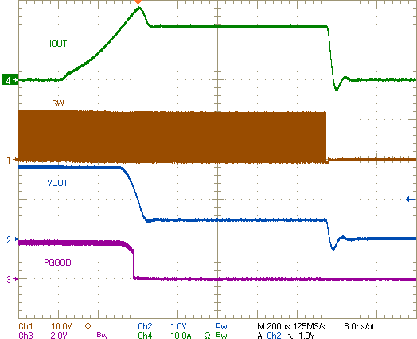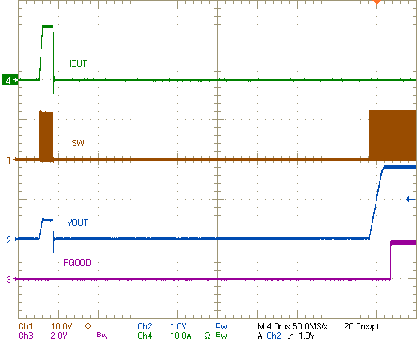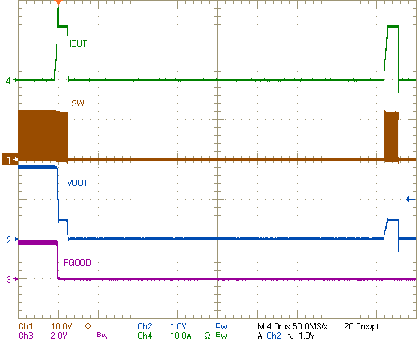SLVUBM5A April 2019 – August 2021
2.10 Hiccup Mode Current Limit
Figure 2-16, Figure 2-17, and Figure 2-18 show the TPS54A24 hiccup current limit feature. If a current limit event persists for the wait-time before hiccup, the TPS54A24 shuts down. The TPS54A24 restarts after the hiccup time.
Figure 2-16 shows the TPS54A24EVM-058 entering hiccup with a short circuit on the output. The initial overshoot in the output current is the output capacitors discharging. Figure 2-17 shows the TPS54A24EVM-058 entering hiccup with a longer timescale to show the hiccup period. Figure 2-18 shows the TPS54A24EVM-058 exiting hiccup after the short circuit was removed.
 Figure 2-16 TPS54A24EVM-058 Hiccup Current Limit
Figure 2-16 TPS54A24EVM-058 Hiccup Current Limit Figure 2-18 TPS54A24EVM-058 Hiccup Stop
Figure 2-18 TPS54A24EVM-058 Hiccup Stop Figure 2-17 TPS54A24EVM-058 Hiccup Start
Figure 2-17 TPS54A24EVM-058 Hiccup Start